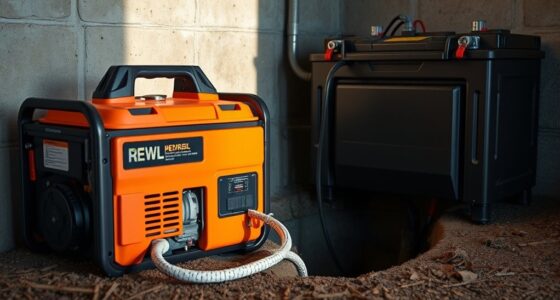To optimize maintenance intervals and service plans, you need to know your assets inside out. Tailor schedules based on real-time data like usage, environment, and equipment condition. Differentiate planning from scheduling to ensure tasks are well-organized and timely. Use risk assessments to prioritize high-impact failures. Finally, leverage technology like CMMS and IoT for continuous improvement. If you keep exploring, you’ll discover how to turn these principles into a maintenance powerhouse.
Key Takeaways
- Use real-time data and sensor insights to customize maintenance intervals for each asset’s condition and usage.
- Prioritize maintenance tasks based on risk assessments focusing on failure probability and impact severity.
- Differentiate clearly between planning (what and why) and scheduling (when and who) for effective maintenance execution.
- Maintain detailed asset inventories to inform maintenance planning and ensure accurate, up-to-date scheduling.
- Leverage technology like CMMS and IoT to automate, optimize, and continuously improve maintenance intervals and service plans.
Know Your Assets Inside and Out

Knowing your assets inside and out is essential for effective maintenance management. You need a thorough inventory that includes detailed descriptions, serial numbers, and exact locations to keep track of each asset. Document key information like asset type, manufacturer, model, and installation date to streamline maintenance planning. Recording ownership and usage parameters clarifies accountability and helps optimize operational efficiency. Keep lifecycle data updated, noting asset age, expected lifespan, and past maintenance history. Using a computerized maintenance management system (CMMS) allows you to centralize this data, making updates and access simple. When you have accurate, detailed asset information, you can plan maintenance proactively, prevent failures, and extend asset life, all while maintaining clear oversight and control over your operations. Having complete and accurate asset data is fundamental to developing effective service plans and maintenance intervals. Additionally, tracking maintenance history enables better prediction of future service needs and helps in scheduling timely interventions.
Customize Maintenance Intervals Based on Data and Conditions
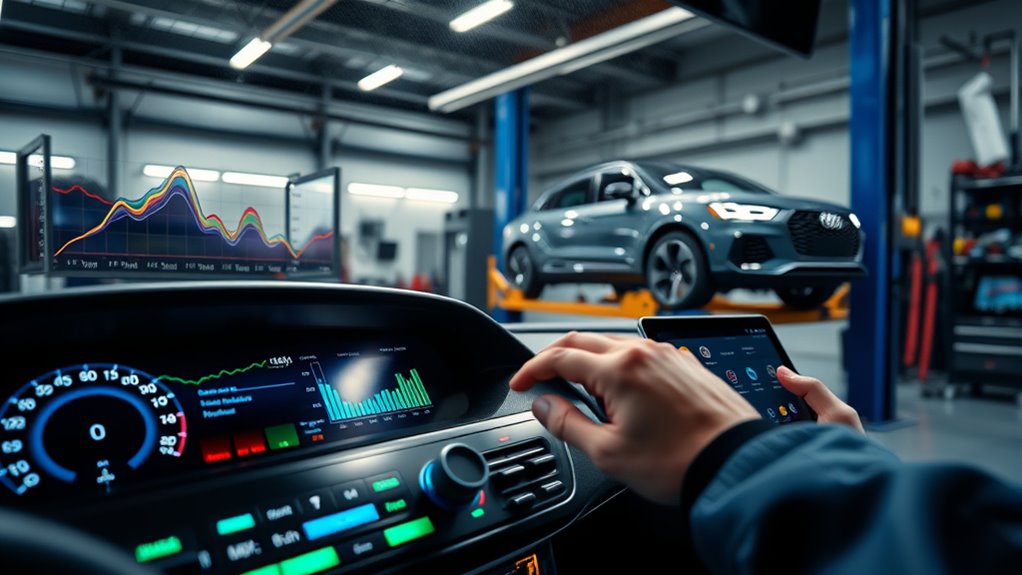
Customizing maintenance intervals based on data and conditions allows you to move beyond fixed schedules and tailor service timing to each asset’s actual usage. By analyzing real-time utilization data, you can adjust service frequency according to how often and how hard equipment operates. Environmental factors like load, temperature, and task demands influence wear and tear, so setting flexible intervals prevents premature or delayed maintenance. IoT sensors continuously monitor parameters such as vibration, pressure, and temperature, providing early warnings of potential issues. Integrating this data into your CMMS enables dynamic scheduling, reducing downtime and optimizing resource use. This approach ensures maintenance aligns with actual needs, extending asset life, improving efficiency, and lowering costs by proactively addressing conditions before failures occur. Usage-based maintenance considers the tool’s lifespan as dependent on usage conditions, not just time or task count]. Additionally, understanding predictive maintenance techniques can further enhance your ability to anticipate and prevent failures, ensuring optimal operational performance.
Differentiate Between Planning and Scheduling Tasks
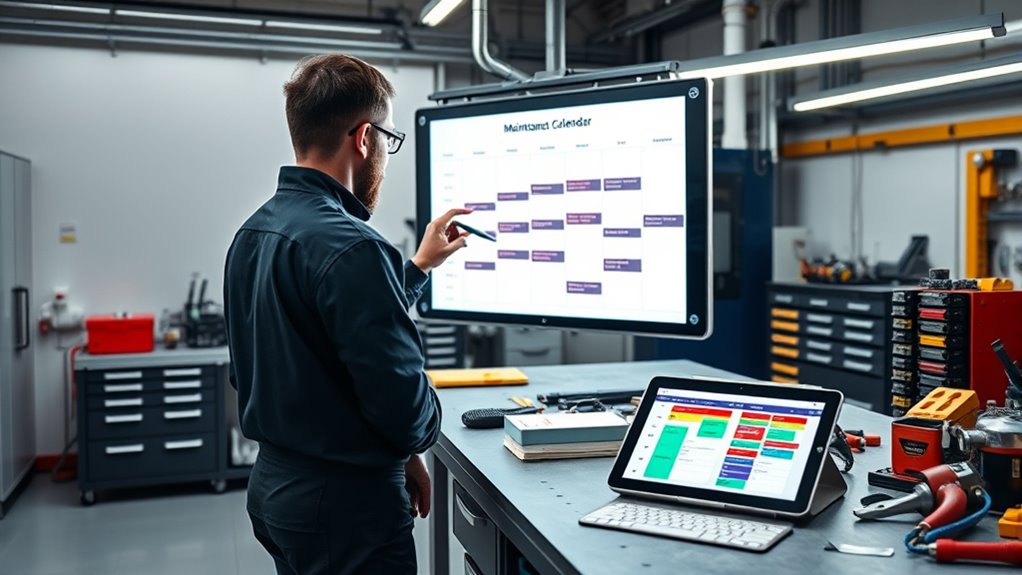
| Aspect | Planning | Scheduling |
|---|---|---|
| Focus | What, why, how | When, who |
| Main activities | Define scope, resources, procedures | Assign tasks, set dates |
| Sequence importance | Precedes scheduling; guides it | Follows planning; executes tasks |
| Flexibility of tasks | Generally more adaptable during planning | Less flexible once scheduled, requiring precise timing |
Use Risk Assessment to Prioritize Effectively
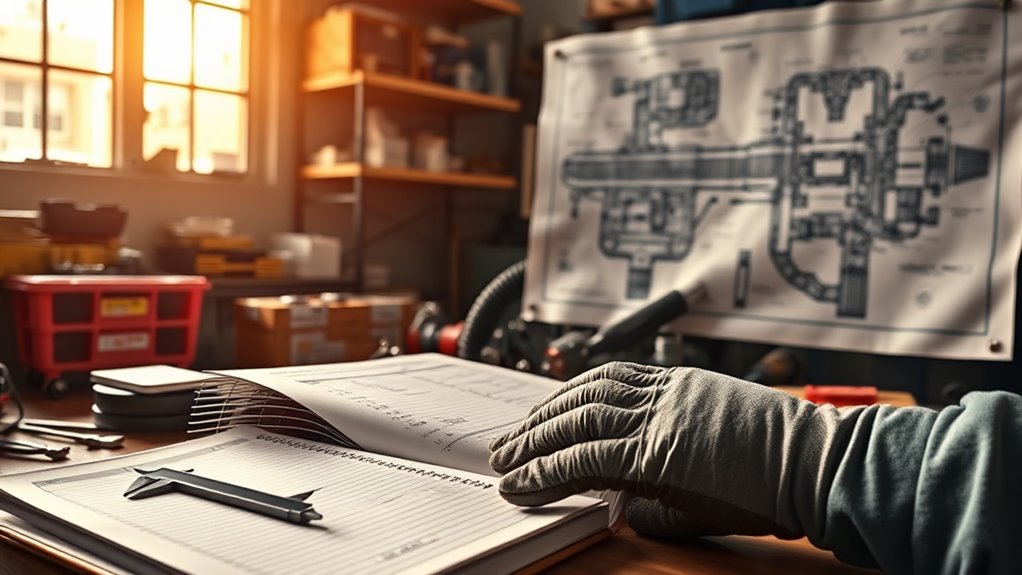
Effective maintenance prioritization relies on evaluating risks to identify which tasks demand immediate attention. You should define clear priority levels, using criteria like urgency and impact, tailored to your industry. Incorporate factors such as safety risks, operational impact, and regulatory compliance to standardize decision-making. Conduct risk assessments with Risk Priority Numbers (RPN) by combining failure probability and consequence severity, visualized through risk matrices. Recognize that even low-probability, high-severity failures need proactive measures. Prioritize assets based on criticality and condition, focusing on those with the highest risk to safety and operations. Use asset data and failure history to refine your approach. Linking work orders to risk assessments ensures resources target the most impactful tasks, maintaining safety and efficiency. Risk assessment methods provide a structured way to evaluate potential failures and determine appropriate maintenance actions. Additionally, incorporating predictive maintenance techniques can help identify issues before they escalate, further optimizing your maintenance schedule.
Leverage Technology for Continuous Improvement
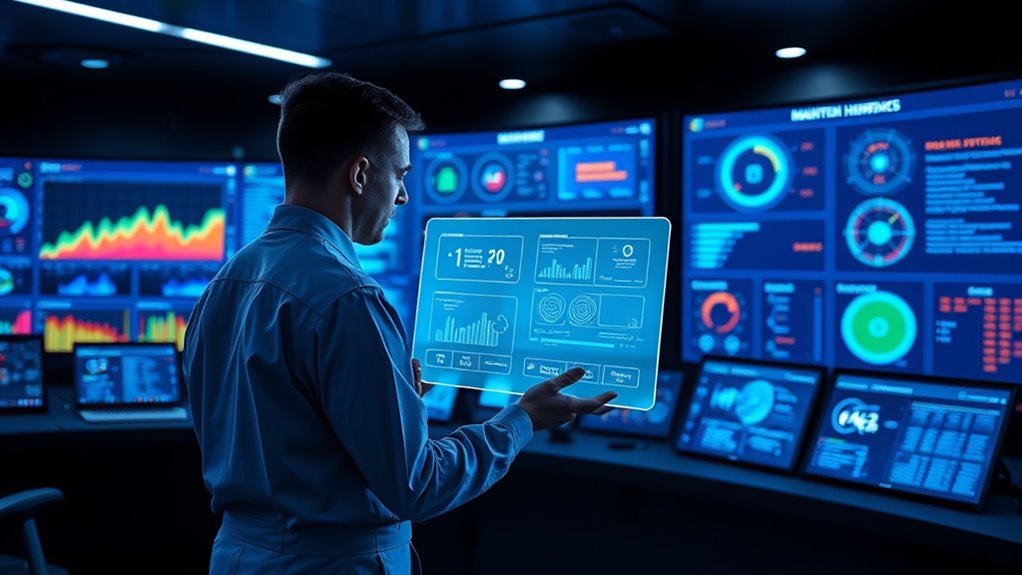
Leveraging technology is essential for driving continuous improvement in maintenance practices. Digital tools like Computerized Maintenance Management Systems (CMMS) streamline workflows by centralizing work orders, automating task prioritization, and reducing downtime. These systems optimize inventory control, minimizing costs from surplus or missing parts, and enable real-time asset tracking for predictive maintenance. Integrating CMMS with Enterprise Asset Management (EAM) offers extensive visibility across multiple sites, promoting standardization and resource efficiency. Predictive maintenance, fueled by data analytics, cuts reactive repairs by up to 25%, extends equipment life, and decreases unplanned downtime by up to 50%. Research shows that over 60% of organizations are adopting cloud-based systems and 80% of technicians are using mobile devices, technology adoption accelerates digital transformation and ensures maintenance becomes smarter, faster, and more cost-effective.
Frequently Asked Questions
How Often Should Asset Inventories Be Reviewed and Updated?
You should review and update your asset inventories at least semi-annually or annually to keep data accurate and secure. Quarterly reviews are ideal, especially for IT assets, to catch obsolete equipment and address security risks. Tailor the frequency based on your organization’s size and asset criticality, but avoid surpassing a year. Regular reviews help ensure compliance, optimize costs, and strengthen security by keeping your asset records current and reliable.
What’s the Best Way to Handle Unexpected Equipment Failures?
Unexpected equipment failures can cost your business thousands per hour. To handle them effectively, you should implement preventive maintenance and real-time monitoring, which can reduce breakdowns by up to 75%. Increase operator training and adopt automated analytics to detect early signs of failure. Keeping a flexible, cross-trained team ready to respond quickly minimizes downtime, ensuring your operations stay smooth and costs stay controlled during unforeseen events.
How Do You Balance Preventive and Predictive Maintenance Schedules?
You balance preventive and predictive maintenance by evaluating your assets’ criticality and failure patterns. Use preventive maintenance for predictable, low-impact assets to keep costs low and reliability steady. For high-value, unpredictable equipment, implement predictive maintenance to catch issues early and avoid costly failures. Combining both strategies allows you to optimize resources, reduce downtime, and extend asset lifespan, ensuring your maintenance plan is both efficient and effective.
What Criteria Determine the Priority Level of Maintenance Tasks?
You determine the priority of maintenance tasks by evaluating safety risks, operational impact, and compliance requirements. If a task poses immediate danger or could halt critical processes, it gets top priority. Consider resource availability and scheduling feasibility, balancing reactive and planned work. Evaluate potential costs and consequences of delays. Regularly review and adjust priorities based on real-time conditions, ensuring safety, efficiency, and minimal disruption to your business operations.
How Can New Technology Be Integrated Without Disrupting Existing Workflows?
You can integrate new technology smoothly by adopting a phased rollout, allowing your team to adapt gradually. Provide thorough training so everyone understands the new tools, and guarantee they work seamlessly with existing systems like CRM or ERP. Use automation platforms preferred by most executives to prevent fragmentation, and continuously monitor the process. This approach minimizes disruptions, boosts efficiency, and helps your team embrace technological changes confidently.
Conclusion
By understanding your assets, customizing intervals, and leveraging technology, you set yourself up for success. Remember, are you truly maximizing your maintenance strategy or just going through the motions? Staying proactive and informed guarantees you catch issues early and keep everything running smoothly. Don’t wait for failures to remind you of what you could have done—take control today, and watch your assets perform at their best every time.



